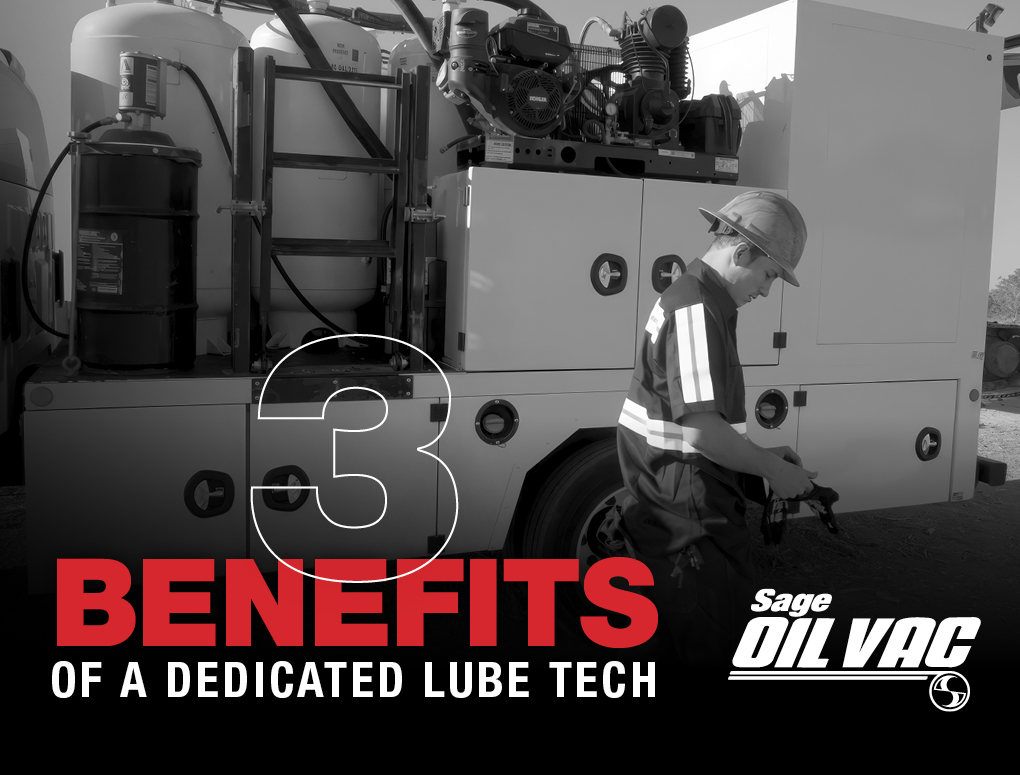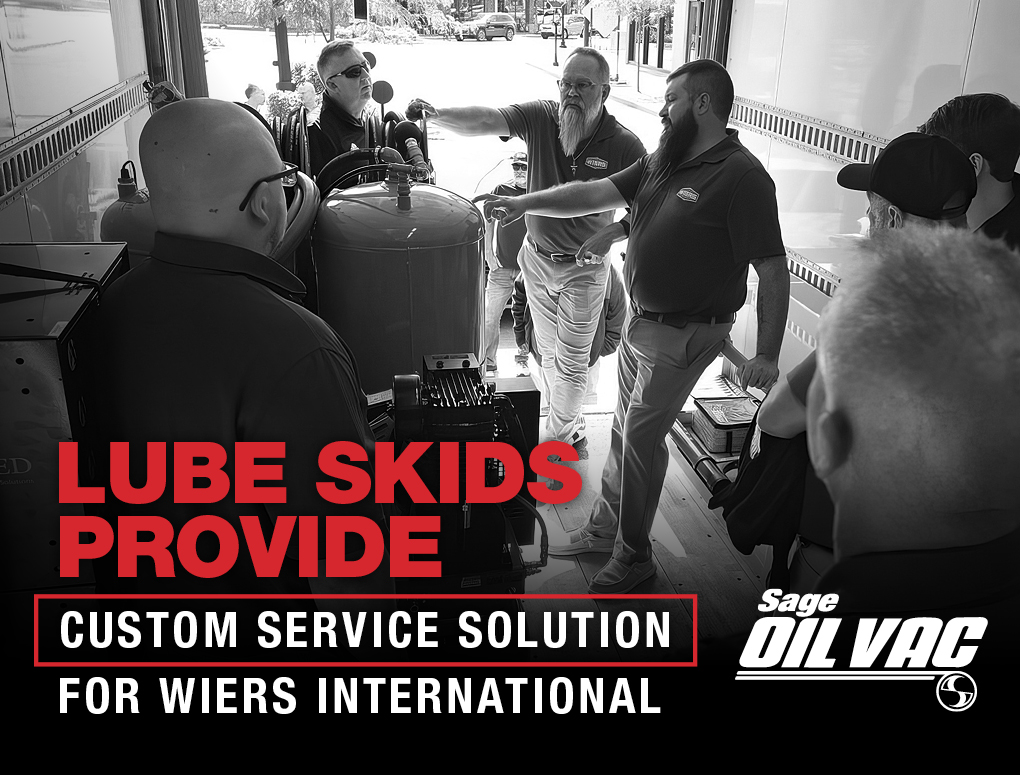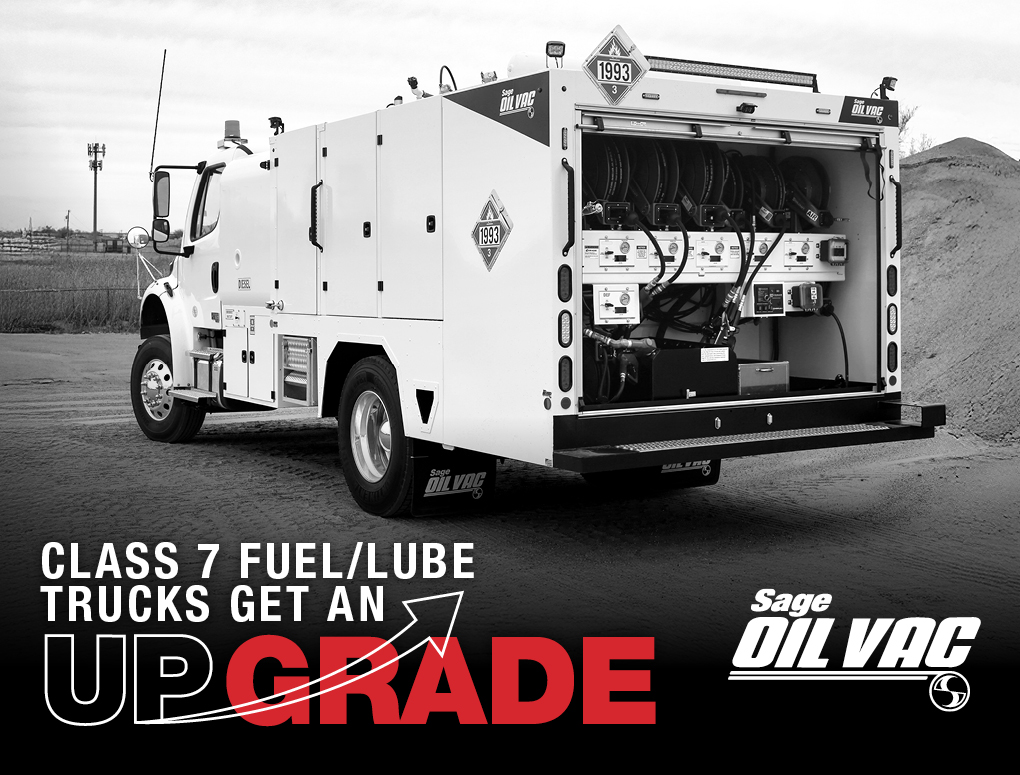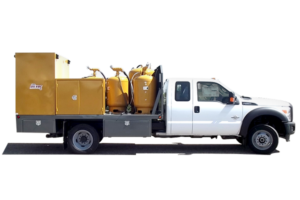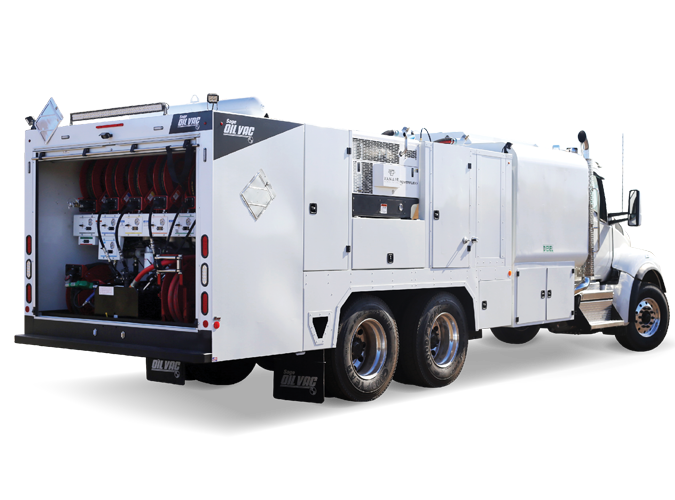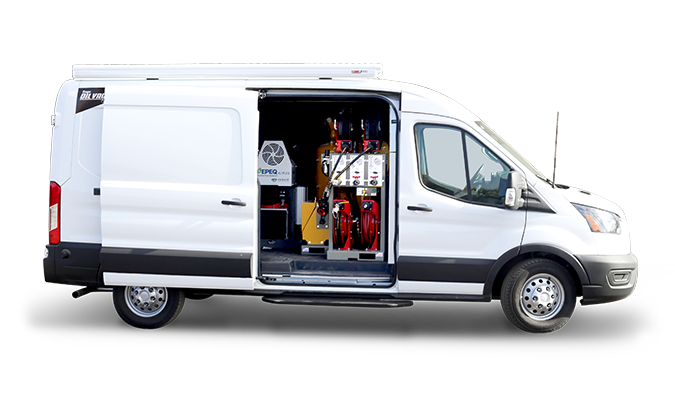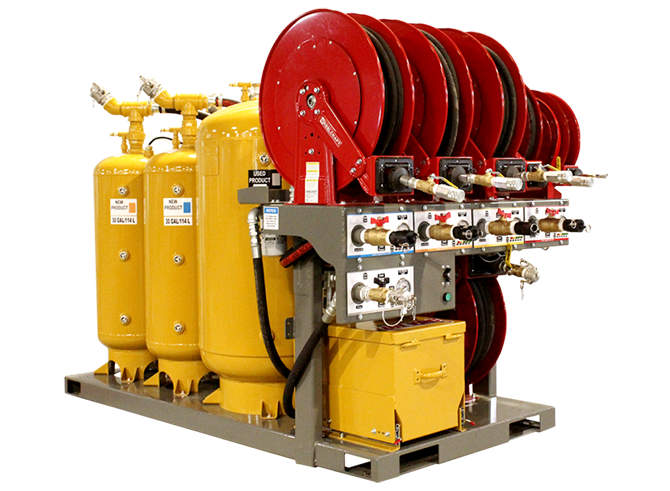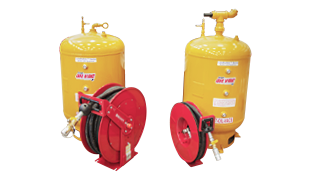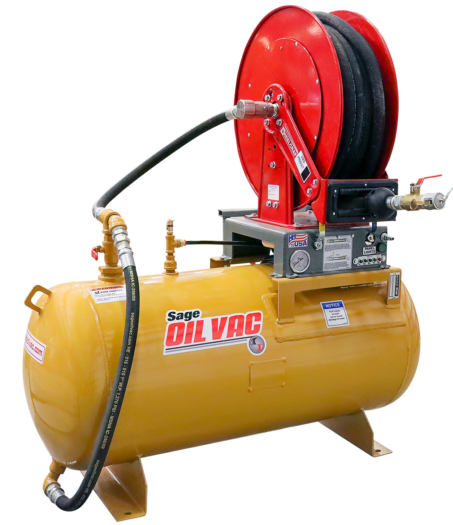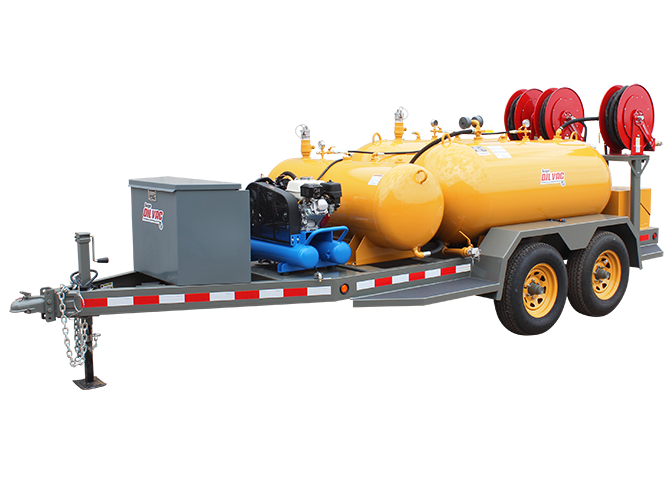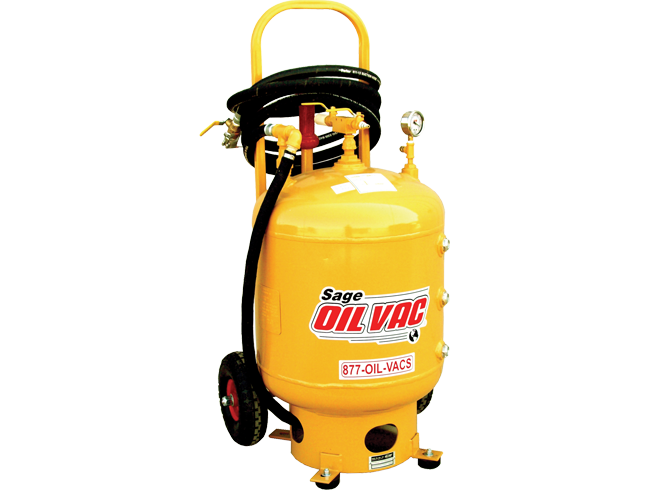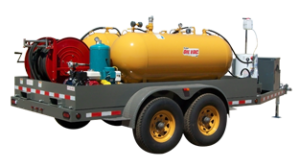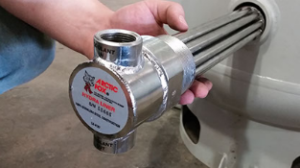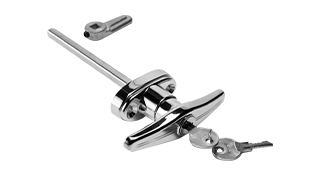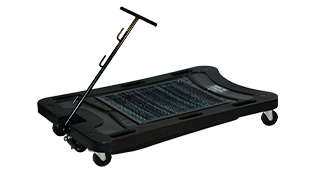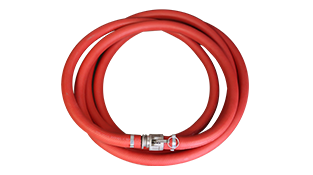REDESIGNED LUBE TRUCKS MEET CHANGING OPERATOR NEEDS
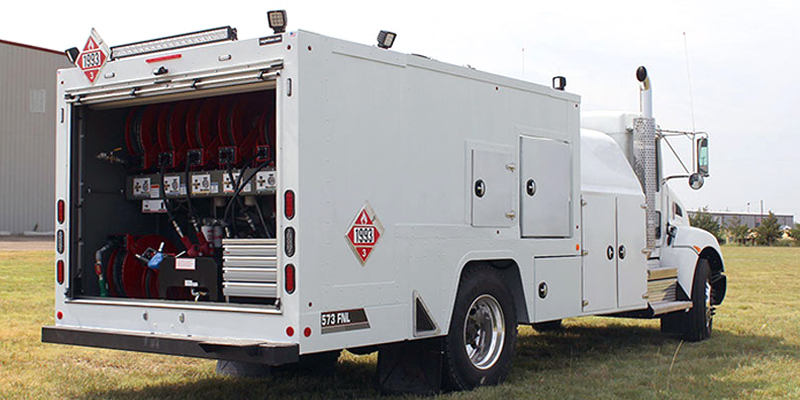
Evolving customer needs, a changing workforce and new technology are changing the marketplace for fuel and lube trucks.
“Our customers are working in a different world than they were just a few years ago. Between the chassis redesign, features and technology, we’re devoting a lot of resources to keeping up with what they need,” said Sage Oil Vac CEO Aaron Sage. “Construction companies spend hundreds of thousands of dollars on fuel and oil, and we want to make sure we’re helping them do their job serving their customers.”
A newly redesigned lineup of Sage Oil Vac lube trucks directly addresses operator concerns and provides the tools and technology to help operators make the most efficient use of their time. The new trucks — non-CDL models (Class 6), as well as Class 7 and 8 — not only help operators work more efficiently, but add tools that help them better meet the needs of those operating the machinery they’re servicing. The new trucks come at a time when changes in the workforce are creating challenges for machinery maintenance service providers around the country.
Industry demographics
One of the changing industry dynamics driving the evolution in lube and fuel service trucks exemplified by the new lineup of Sage non-CDL (Class 6), Class 7 and 8 trucks lies in permitting. There are fewer operators today obtaining a commercial driver’s license (CDL) than in past generations. And, the labor market for those with CDLs is so tight today, it makes it difficult for construction contractors and service technicians to find adequate qualified operators with the licenses required to operate the larger Class 7 or 8 trucks. That makes the revamped non-CDL lube truck popular, Sage said, because managers can more efficiently manage the same amount of work with a smaller, less-expensive truck.
“It’s harder to find CDL drivers, so a lot of companies — especially in the oil fields in West Texas — are looking for non-CDL applications. So, if you’re looking for a lube-only truck, these non-CDL trucks can help meet the same need without that license,” Sage said of the trucks that are built on either a Ford F-600 and Chevrolet 6500 pickup. “A lot of the big OEM dealers are using these trucks for oil, but not fuel, to conduct maintenance for rental fleet customers.”
Redesigned body
There’s an aesthetic shift in the new Sage lube trucks, but it’s not just about good looks. The new design includes panels and components to provide more solid, seamless coverage of the tools and materials the trucks are transporting. Gone are the days when a driver pulls up behind a Sage lube truck will see buckets, tools and other components that are common at jobsites. In addition to helping provide dealers the ability to better promote their businesses, the new design goes even further to promote the cleanest possible jobsite and prevent possible issues with spills that can sometimes attract punitive regulatory attention.
“You don’t see all the equipment and oil, and we do that for two reasons: First, the more you can make these trucks look nice and better shield oil and tools from view, the better,” Sage said. “And many of these OEM dealers are selling service, so they want to put a wrap or decal across the entire side of the truck with their name on it to maximize their brand’s visibility. These better-covered trucks with more seamless designs make it easier to do that.”
Managing weight
Another component of the redesign of Sage Oil Vac’s lube trucks adds efficiency by better-managing weight, a common issue for operators who sometimes face both regulatory and supply management issues with heavy lube trucks. The new Sage trucks integrate more aluminum into the chassis and components, while shifting some parts and components to different locations helps better balance overall weight across the front and rear axles.
“Weight is always a challenge, so we redesigned these trucks to optimize weight for a better center of gravity. And, we’re building more items out of aluminum for weight savings,” Sage said. “There is a lot more aluminum going into these trucks and other machinery across the industry. I think the market is more accepting of it. We are using steel where we need steel and aluminum where we need aluminum.”
Efficiency through technology
On top of the Sage pressure and vacuum delivery system that eliminates diaphragm and piston pumps — common sources for maintenance work and cost — the new lube trucks help operators work more efficiently by integrating new technology that helps better track and manage maintenance performed. Via a touchscreen monitor, the operator can track how much fluid and/or fuel is being distributed to each machine on a jobsite, eliminating a step in the process and adding efficiency. This technology that’s rapidly advancing will continue to evolve to help operators work efficiently in the field.
“Operators can assign or record gallons of fluids, then dump it onto a USB drive or CSV file to enable the customer to get live reporting,” Sage said. “You can see how much fuel and oil you’re distributing to each piece of equipment. It especially really helps larger OEM dealers work more efficiently since they don’t have to go around a jobsite and ask machine operators if they need fuel or oil. It takes that step out of the process.”
Learn more about Sage Oil Vac lube trucks and bodies. Have more questions or want to find your nearest Sage Oil Vac dealer? Contact us!

